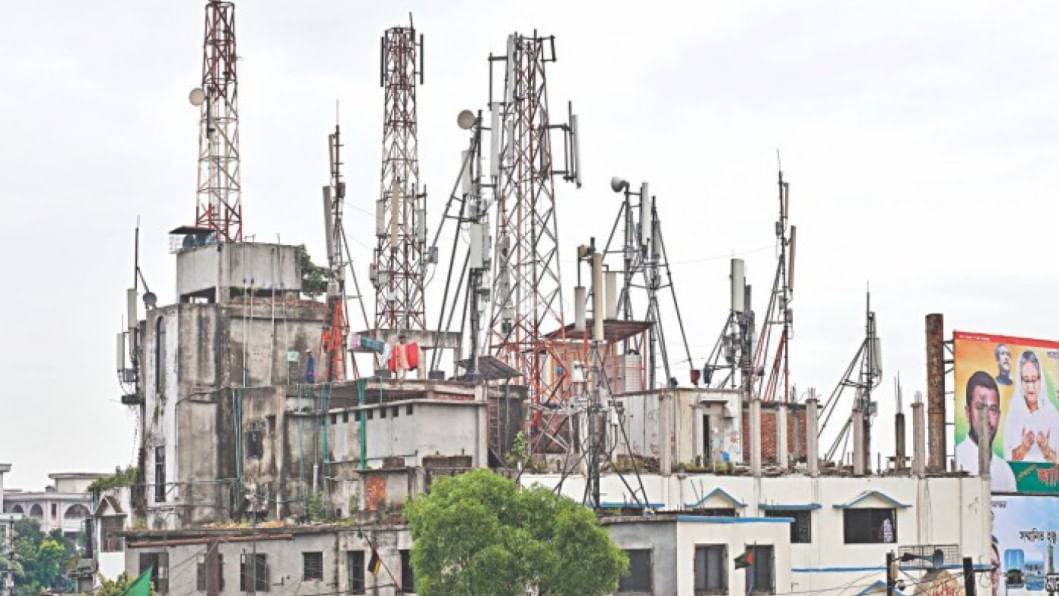Signals of change: Telecom Policy 2025

When I asked different stakeholders across the telecom spectrum about the new policy, almost everyone leaned forward and asked, "So, what's in it for me?"
The moment I mentioned a few positives, they interrupted, "Yes, but what about what we didn't get?" It reminded me of a story about a man who served a cup of tea. First, he complained it was too hot, then too cold, and finally that it was too little.
When offered more, he frowned and said, "Now it's too much!" The poor host was left wondering if he wanted tea or therapy.
We behave much the same way; even when the policy finally pours us an almost full cup, we keep stirring it until we find something missing.
Bangladesh's Telecommunication Network and Licensing Policy 2025 represents the most ambitious reform since the 2010 ILDTS framework.
After years of regulatory clutter and institutional inertia, it finally attempts to reset the foundation for a more efficient, investor-friendly, and future-ready telecom ecosystem.
It simplifies, streamlines, and—most importantly—recognizes that in a digital economy, regulation should enable innovation rather than restrain it. Yet, as with all major reforms, its success will depend on how well the details are executed. And it's not all perfect!
The new framework replaces the outdated maze of overlapping licenses such as IGW, IIG, ICX, and NIX with a streamlined four-tier structure comprising Access Network Service Provider (ANSP), National Infrastructure and Connectivity Service Provider (NICSP), International Connectivity Service Provider (ICSP), and Non-Terrestrial Networks and Service Provider (NTNSP).
A separate Telecom-Enabled Service Enlistment (TESP) category covers OTT and value-added services under light-touch regulation.
This overhaul eliminates more than three thousand existing licenses, facilitating convergence among voice, data, and digital services.
For the first time, policy and technology appear to be running in sync, rather than on parallel tracks.
Technology neutrality, which allows the rollout of 5G, 6G, IoT, and AI-based services without additional approvals, reflects a confident and forward-looking approach.
The mandatory provision for both active and passive infrastructure sharing replaces years of duplication and inefficiency.
The policy also sets clear ownership guidelines, which has drawn mixed reactions. However, this is partly offset by lower spectrum pricing, which can attract investment in network expansion—provided that operators maintain high service quality and coverage standards.
Equally encouraging is the focus on sustainability and cyber resilience. Operators are now required to utilize renewable energy, manage electronic waste responsibly, and adhere to international data protection standards.
Lawful interception, a long-debated area, now includes judicial oversight to strike a balance between national security and privacy rights.
The three-stage migration roadmap ensures an orderly transition for existing licensees by 2027, preventing market disruption.
Importantly, the transition period provides delisted licensees, such as ICX and NIX operators, with the opportunity to negotiate service partnerships with access operators who will continue to require these services.
This creates room for collaboration rather than exclusion, as operators expanding their networks will still depend on the infrastructure and expertise of these entities.
Despite these advances, a few gaps remain. Several key implementation details—including those related to MVNOs, SMP regulation, pricing, and peering frameworks—are deferred to future BTRC guidelines, leaving room for uncertainty.
The regulator's independence, although frequently mentioned, remains more symbolic than real, as BTRC's autonomy still depends on ministerial approval.
Small ISPs and local entrepreneurs, who have been the backbone of rural connectivity, may find compliance and migration costs too burdensome, despite the introduction of district-level licensing.
These practical challenges could dilute the inclusivity that the policy aspires to achieve if not addressed with transitional support.
Globally, Bangladesh now stands closer to its ASEAN peers in terms of structure and ambition but still lags in institutional maturity.
The unified licensing model, green telecom commitments, and data protection initiatives reflect global best practices.
However, limited regulatory independence and a restrictive foreign ownership regime remain weak spots.
While Malaysia and Indonesia allow 70 to 100 percent foreign participation, Bangladesh's ceiling of 49 to 85 percent feels cautious.
True competitiveness will depend on building investor confidence through consistency, fairness, and the assurance that policy direction will remain stable and predictable.
The next phase must focus on converting intent into action. BTRC should promptly issue clear operational guidelines on migration, infrastructure sharing, and SMP regulation to eliminate ambiguity.
A new Telecommunication Act 2026 should be introduced, replacing outdated laws and ensuring the complete statutory independence of BTRC, along with updated provisions for data protection, cybersecurity, and spectrum trading.
Establishing a permanent Telecom Advisory Council would promote structured dialogue between the regulator, operators, and other stakeholders, ensuring that reforms evolve through collaboration rather than direction.
The point of debate remains whether it should be done by the current interim government or left to the upcoming elected government!
The Telecommunication Policy 2025 is a timely and courageous step forward. It corrects years of fragmentation and creates the foundation for a more integrated, innovation-driven sector.
Its success, however, will depend not on how well it reads, but on how sincerely it is implemented through clarity, transparency, and consistent follow-through.
Bangladesh now has the blueprint for transformation. What it needs next is disciplined execution and the collective will to make its digital future truly inclusive and sustainable.

 For all latest news, follow The Daily Star's Google News channel.
For all latest news, follow The Daily Star's Google News channel. 





Comments